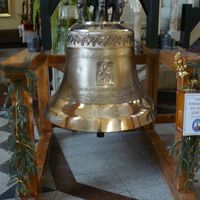Grybów
6.64

Overview
Grybów is a town in the Lesser Poland Voivodeship, located on the border of the Low Beskids and the Rożnów Foothills, founded by Casimir III the Great in 1340. Over time, the town's name underwent Polonization, with its original versions including Grünberg and Grewensztat. Historically, Grybów was the seat of a non-castle district (starostwo niegrodowe) and a center of trade and crafts, known for its cloth-making industry and the activities of Wit Stwosz. In the 17th century, it faced economic decline, and its residents participated in national uprisings, including the January Uprising. During World War II, the town experienced brutal repression, including the liquidation of its ghetto. Architecturally, Grybów is characterized by numerous monuments listed in the national register, such as the Basilica of St. Catherine, the town hall, and the synagogue. Also noteworthy are the World War I military cemetery and the freestanding villa "Helenówka." The town has rich cultural traditions and is home to various sports and artistic organizations. Grybów hosts diverse events, including volleyball tournaments organized by the UKS Iskry sports club. Its railway connections and national roads facilitate transportation, while the proximity to mineral water sources and industry (including the Grybów Brewery) indicates economic development. Another point of interest is the "Royal Railway Bridge," built after World War II, which serves as an important transport route. Grybów is a partner town of cities such as Château-Thierry in France and Nyírtelek in Hungary, highlighting its role in international cooperation. The town also boasts distinguished figures, including honorary citizens, among whom are well-known names associated with architecture and art.
Location
You can also find here:
2025 Wizytor | All Rights Reserved
